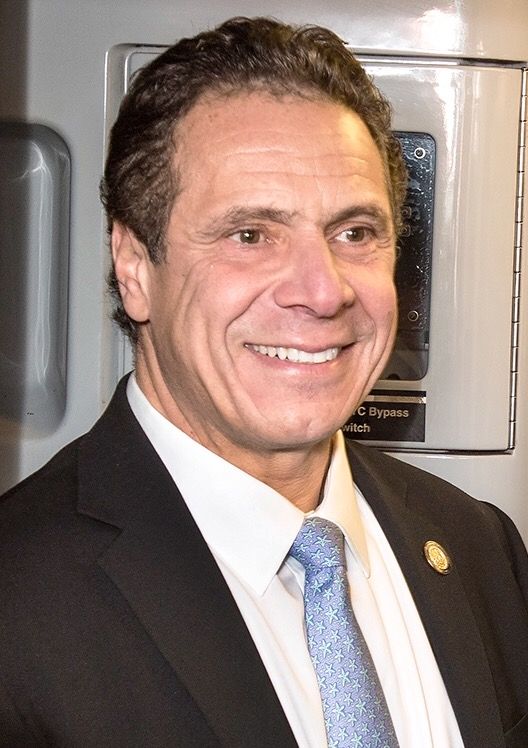
Andrew Mark Cuomo, born on December 6, 1957, in the New York City borough of Queens, embarked on a political career that would profoundly shape the landscape of New York State for decades. As the son of former Governor Mario Cuomo, his path into public service was perhaps predestined, yet his journey was marked by distinct challenges, significant achievements, and ultimately, a tumultuous departure from office. From his roots in Queens to his tenure as the 56th Governor of New York, Cuomo’s political narrative is one of ambition, policy innovation, and enduring controversy. Educated at Fordham University and Albany Law School, Cuomo’s early life laid the groundwork for a career characterized by both the weight of expectation and a determined drive for impact.
His entry into the political arena commenced by managing his father’s successful 1982 New York gubernatorial campaign. This initial immersion saw him join the governor’s staff, serving as a policy advisor for a symbolic annual salary of one dollar. Within his father’s administration, Andrew Cuomo swiftly earned a reputation as the “enforcer,” a stark contrast to his father’s more amiable public persona, forming a strategic “good cop/bad cop dynamic” designed to advance legislative goals. This early period solidified a pragmatic and results-oriented approach that would define much of his subsequent career.
Before ascending to federal office, Cuomo further honed his public service acumen in New York City. From 1984 to 1985, he served as a Manhattan assistant district attorney, gaining insight into the judicial system. His commitment to social issues was underscored by his founding of Housing Enterprise for the Less Privileged (HELP) in 1986, a venture he committed to full-time by 1988 after leaving private law practice. Moreover, during Mayor David Dinkins’ administration from 1990 to 1993, Cuomo chaired the New York City Homeless Commission, tasked with developing policies to combat homelessness and expand housing options within the metropolis.
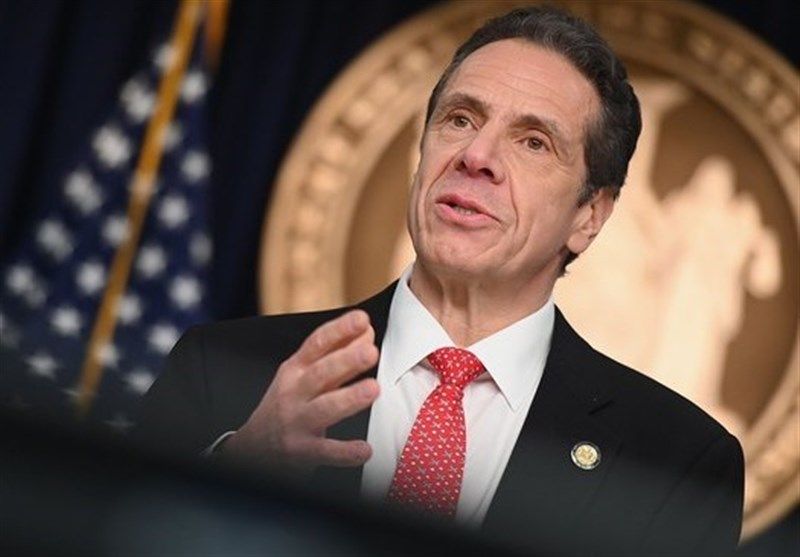
In 1993, Andrew Cuomo transitioned to national politics, joining President Bill Clinton’s administration as Assistant Secretary for Community Planning and Development in the Department of Housing and Urban Development (HUD). His ascent within HUD was swift and significant; following Secretary Henry Cisneros’ departure, Cuomo was unanimously confirmed by the United States Senate to assume the role of HUD Secretary. He served in this cabinet-level position from January 1997 until the conclusion of the Clinton administration in 2001, leaving an indelible mark on federal housing policy.
During his tenure as HUD Secretary, Cuomo championed several initiatives aimed at increasing homeownership and expanding access to affordable housing. He specifically pushed government-sponsored lenders Fannie Mae and Freddie Mac to purchase more home loans issued to poor homeowners, an effort described as an attempt to combat discrimination against minorities. While some analysts, such as Edward J. Pinto, a former chief credit officer at Fannie Mae, have retrospectively suggested this contributed to the 2007–2010 subprime mortgage crisis, stating that “Cuomo was pushing mortgage bankers to make loans and basically saying you have to offer a loan to everybody,” others, like Dean Baker of the Center for Economic and Policy Research, have nuanced this view, describing Cuomo as merely a “cheerleader” without significant direct culpability.
Beyond mortgage policy, Cuomo’s leadership at HUD saw the negotiation of a groundbreaking agreement with handgun manufacturer Smith & Wesson in 2000. This agreement mandated fundamental changes to the design, distribution, and marketing of firearms, intended to enhance safety and prevent guns from falling into the hands of children and criminals. Furthermore, budgets enacted under his stewardship included provisions for new rental assistance subsidies, reforms to integrate public housing, increased limits on Federal Housing Administration-insured mortgages, and expanded programs to assist homeless individuals in securing housing and employment, alongside the creation of new empowerment zones.
Cuomo’s period at HUD was not without its internal challenges and criticisms, notably concerning his emphasis on public relations and certain initiatives. According to libertarian author and critic James Bovard, Cuomo was purportedly “obsessed with changing HUD’s image,” famously declaring, “The PR is the important thing I do… Eighty percent of the battle is communications.” This focus extended to the creation of a new program, Community Builders, established without explicit congressional appropriation, involving 800 new HUD employees paid as much as $100,000.
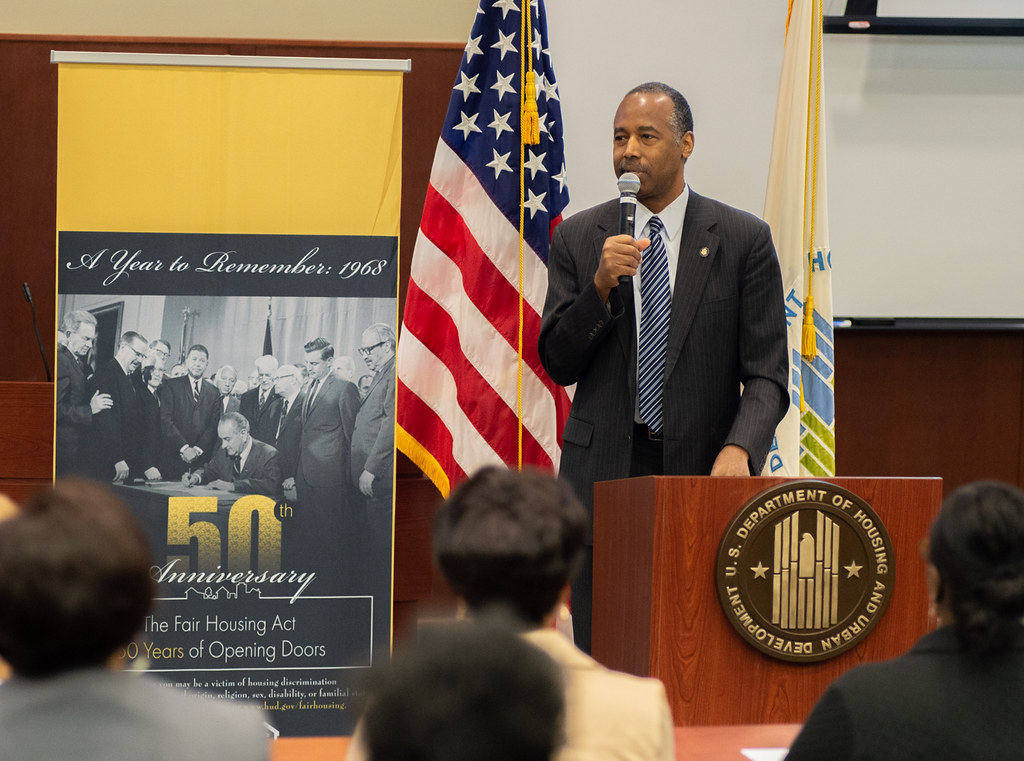
In a June 16, 1999, address, Cuomo articulated one purpose of the Community Builders program as a defense against HUD’s potential abolition. Critics, including one HUD official, viewed Community Builders as “Democratic ward heelers who act as a pipeline between Democratic city officials, party leaders, and the administration and the Democratic National Committee.” Further scrutiny came from Clinton-appointed HUD inspector general Susan Gaffney, who testified in 1998 to a Senate committee that she was experiencing “‘escalating’ attacks on her office by Cuomo and ‘his key aides,’ including cooked-up charges of racism, insubordination, malfeasance, and general dirty-dealing.
In 1999, Gaffney’s office concluded that “most (15 out of 19) Community Builders’ goals were activities rather than actual accomplishments” and that Cuomo’s initiatives “had a crippling effect on many of HUD’s ongoing operations.” Despite these internal controversies, during Cuomo’s time in office, HUD saw two of its four main departments removed from the General Accounting Office’s biannual watch list of poorly managed government programs prone to fraud. Additionally, the department underwent a 15 percent staff reduction as part of Cuomo’s initiative to streamline operations, reflecting an administrative focus on efficiency.
Following his tenure as HUD Secretary, Cuomo spent several years outside government service. From 2001 to 2004, he worked at the Fried Frank law firm, and subsequently, he joined the Island Capital real estate firm until 2006. This period in the private sector provided a respite from the political spotlight before his return to public life in New York State.
His bid for the Democratic nomination for New York governor in 2002 marked a significant juncture, initially positioning him as the favorite with strong fundraising and poll numbers. However, his campaign suffered considerable damage after a notable gaffe in which he remarked, “Pataki stood behind the leader. He held the leader’s coat. He was a great assistant to the leader. But he was not a leader. Cream rises to the top, and Rudy Giuliani rose to the top,” concerning the aftermath of the September 11 attacks. These remarks were widely criticized, even by his father, who later conceded it was a “blunder.” On the eve of the state convention, Cuomo withdrew from contention, acknowledging his slim prospects against the favored party candidate, State Comptroller Carl McCall.
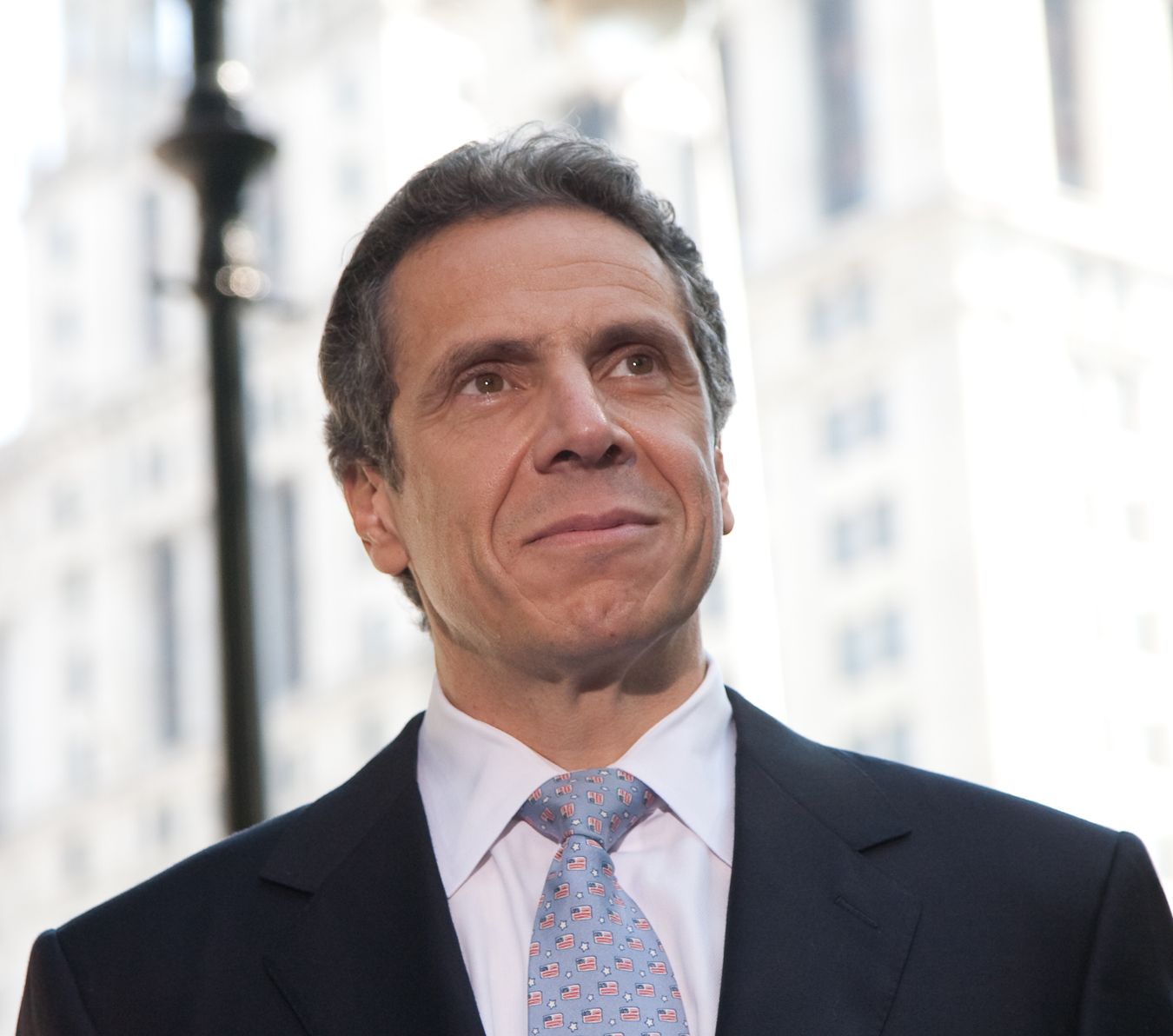
In 2006, Andrew Cuomo mounted a successful comeback, declaring his candidacy for New York state attorney general. He secured the Democratic Party’s endorsement with 65% of the delegates and subsequently won the primary by a margin of over 20% against his nearest opponent, earning him the moniker “New York’s own Comeback Kid” at the nominating convention. In the general election held on November 7, 2006, he decisively defeated Republican nominee Jeanine Pirro, capturing 58% of the vote.
As Attorney General, Cuomo spearheaded several high-profile investigations and policy initiatives. In July 2007, his office admonished the Spitzer administration for directing the New York State Police to maintain special records of then-Senate majority leader Joseph Bruno’s movements, a directive intended to inflict political damage. Spitzer subsequently accepted responsibility and issued an apology.
A major focus in 2007 was a comprehensive investigation into lending practices and anti-competitive relationships between student lenders and universities. This inquiry uncovered practices where universities steered student borrowers towards “preferred lenders,” often resulting in higher interest rates. The investigation led to significant changes in lending policies across numerous major American universities and the rebate of millions of dollars in fees to affected borrowers.
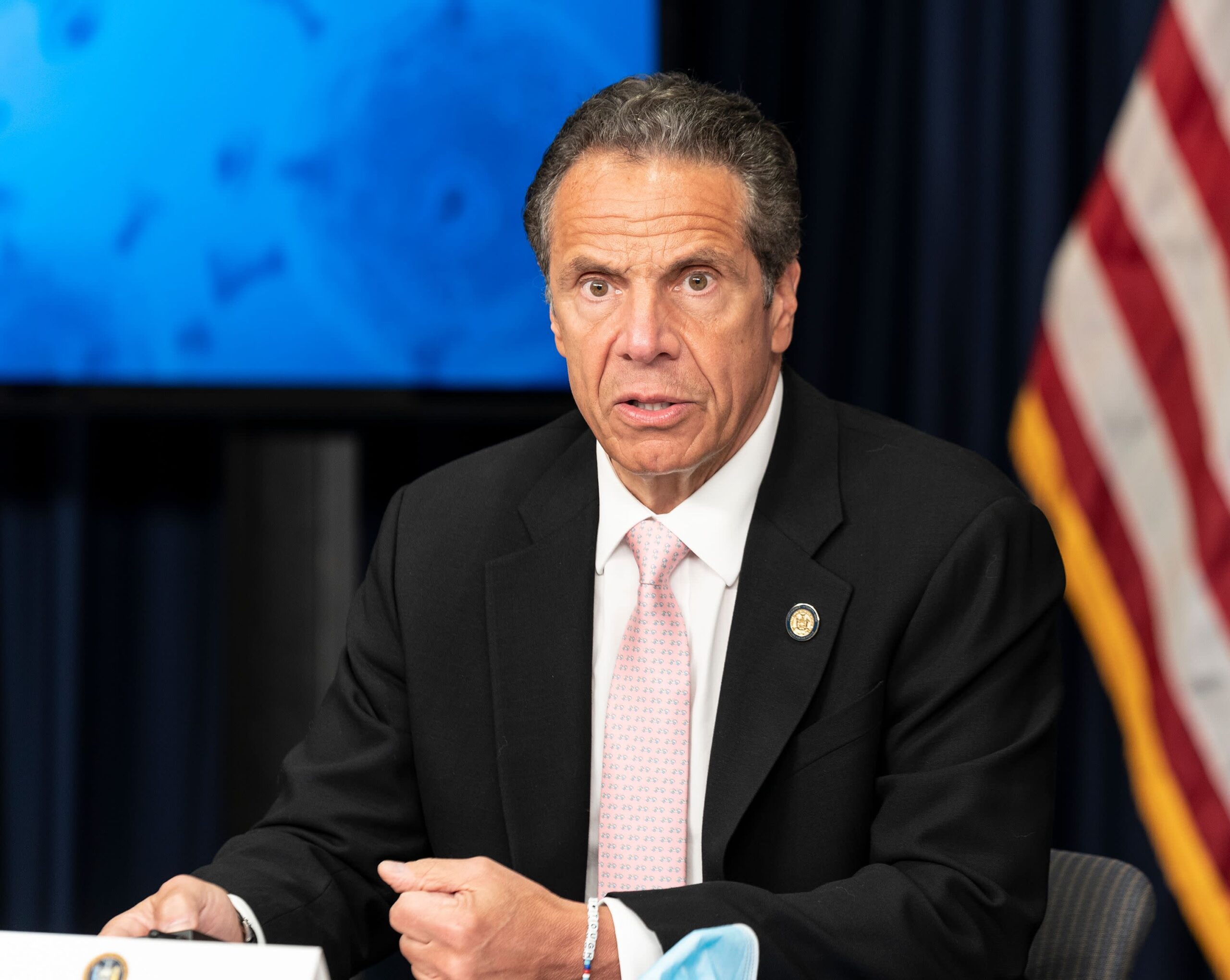
In 2008, Cuomo’s office also took action against online child pornography, announcing on June 10 that three major Internet service providers—Verizon Communications, Time Warner Cable, and Sprint—would “shut down major sources of online child pornography” by ceasing to host certain Usenet groups. This measure followed the identification of 88 newsgroups where child pornography had been posted. Later that year, in 2008, Cuomo faced criticism for remarks regarding Democratic Party candidate Barack Obama, stating, “You can’t shuck and jive at a press conference,” a phrase that Roland Martin of CNN, among others, highlighted as historically carrying negative connotations when used in reference to African Americans.
During 2009, Cuomo’s office engaged in further corruption and fraud investigations, uncovering a “fraudulent scheme to extract kickbacks” that implicated New York investigators, the Securities and Exchange Commission, and attorneys general from multiple states. His tenure as Attorney General positioned him as a prominent figure within New York’s political landscape, setting the stage for his ambitions for higher office.
Following Hillary Clinton’s selection as U.S. Secretary of State in December 2008, Andrew Cuomo was considered a leading contender for the temporary replacement of her U.S. Senate seat, an appointment to be made by then-New York Governor David Paterson. Caroline Kennedy, a first cousin of Cuomo’s ex-wife, was also a prominent candidate but withdrew for personal reasons shortly before Paterson’s announcement. Ultimately, on January 23, Paterson appointed U.S. Representative Kirsten Gillibrand to the Senate.
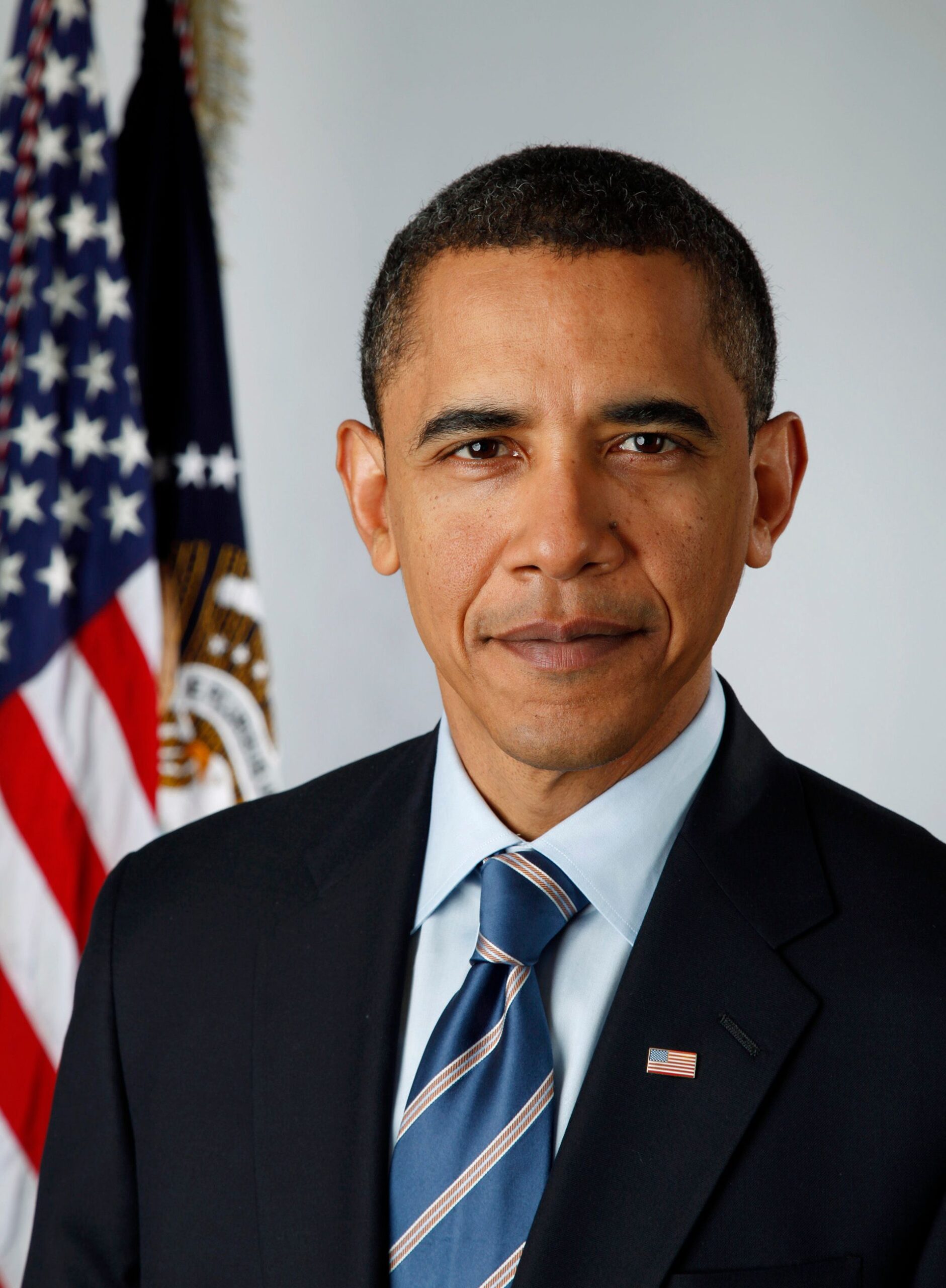
Cuomo’s path to the governorship began in earnest in 2009 when advisors to President Barack Obama reportedly suggested that Governor David Paterson should withdraw his 2010 gubernatorial candidacy in favor of the “popular Attorney General Andrew Cuomo.” On May 22, 2010, Cuomo officially announced his gubernatorial campaign via a video posted to his campaign website, selecting Robert Duffy, then Mayor of Rochester, as his running mate. In the November 2, 2010, general election, Cuomo faced Republican Carl Paladino, a Buffalo-based businessman strongly supported by the Tea Party movement. Cuomo secured a landslide victory, winning 62.6% of the vote, with strong performance across the eastern and downstate regions of the state.
He successfully sought re-election in 2014, with Kathy Hochul as his new running mate. While challenged in the Democratic primary by law professors Zephyr Teachout and Tim Wu, who collectively garnered significant primary votes, Cuomo and Hochul prevailed. In the general election, he defeated Republican Rob Astorino, the Westchester County Executive, by a margin of 54% to 40.6%. Despite lower voter turnout, his victory was comfortable, though the margin was narrower than his 2010 win, with Astorino performing well in upstate New York while Cuomo dominated New York City.
His 2018 re-election campaign saw a challenge from the left by actress and activist Cynthia Nixon in the Democratic primary. Nixon criticized Cuomo on several fronts, including his administration’s perceived failure to resolve the New York City Subway crisis, insufficient protection for undocumented immigrants, and his stance on recreational marijuana legalization and a single-payer healthcare system. Cuomo countered Nixon’s arguments on subway issues by asserting the system’s ownership by New York City, though historical precedent often places the governor in a pivotal role regarding its oversight. An analysis by the New York City comptroller, Scott Stringer, indicated that New York City bore 70 percent of subway repair costs.
Cuomo ultimately defeated Nixon in the primary with 65.5% of the vote. In the general election on November 6, 2018, the Cuomo-Hochul ticket secured another victory, overcoming the Molinaro-Killian ticket with 59.6% of the vote. A notable controversy from this period emerged on March 19, 2021, when The New York Times’ podcast The Daily leaked audio revealing Cuomo threatening Bill Lipton, head of the Working Families Party—which had endorsed Nixon—with the statement, “If you ever say, ‘Well he’s better than a Republican’ again, then I’m gonna say, ‘You’re better than a child rapist.’
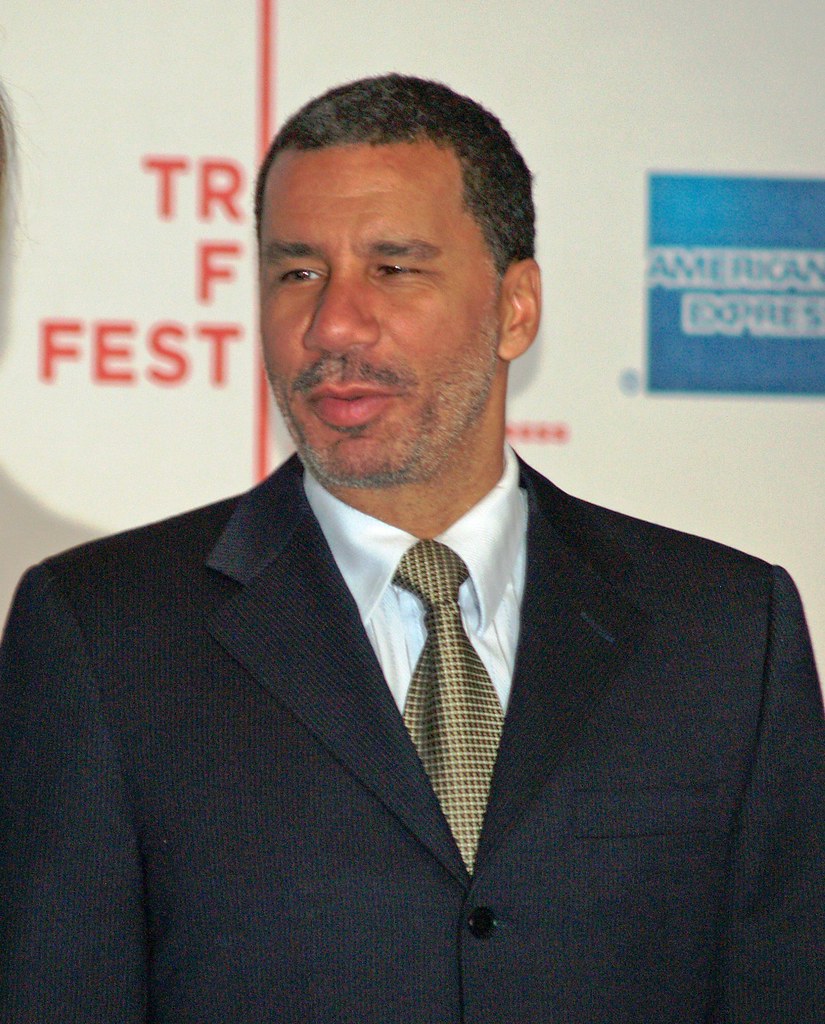
Andrew Cuomo took the gubernatorial oath of office at 12:01 a.m. on January 1, 2011, succeeding David Paterson. His first year as governor was characterized by a concerted effort to pass an on-time budget that reduced spending without increasing taxes. He successfully negotiated a new agreement with a major state-employee union, signed ethics reform legislation, and enacted a property tax cap. A significant legislative achievement was the passage of a same-sex marriage bill with bipartisan support, alongside a comprehensive restructuring of New York’s tax code, which notably raised taxes for the wealthy and lowered them for the middle class.
Throughout his governorship, Cuomo also addressed significant infrastructure needs across the state. His administration oversaw the construction of the Second Avenue Subway, a long-anticipated project, and the Moynihan Train Hall, enhancing transportation infrastructure in New York City. Further, significant reconstruction efforts were undertaken for the Tappan Zee Bridge, a vital Hudson River crossing, and LaGuardia Airport, a major transportation hub. These projects underscored a commitment to modernizing the state’s public works.
Speculation regarding a potential presidential run for Cuomo in 2016 or 2020 was a recurring theme during his governorship. Some reports suggested his support for the Independent Democratic Conference (IDC) until its dissolution in 2018 was partly an attempt to project a more moderate image for an eventual presidential bid, though Cuomo denied these allegations. In 2018, he was instrumental in reuniting the IDC with the mainstream Democratic conference, illustrating his capacity for political maneuvering.
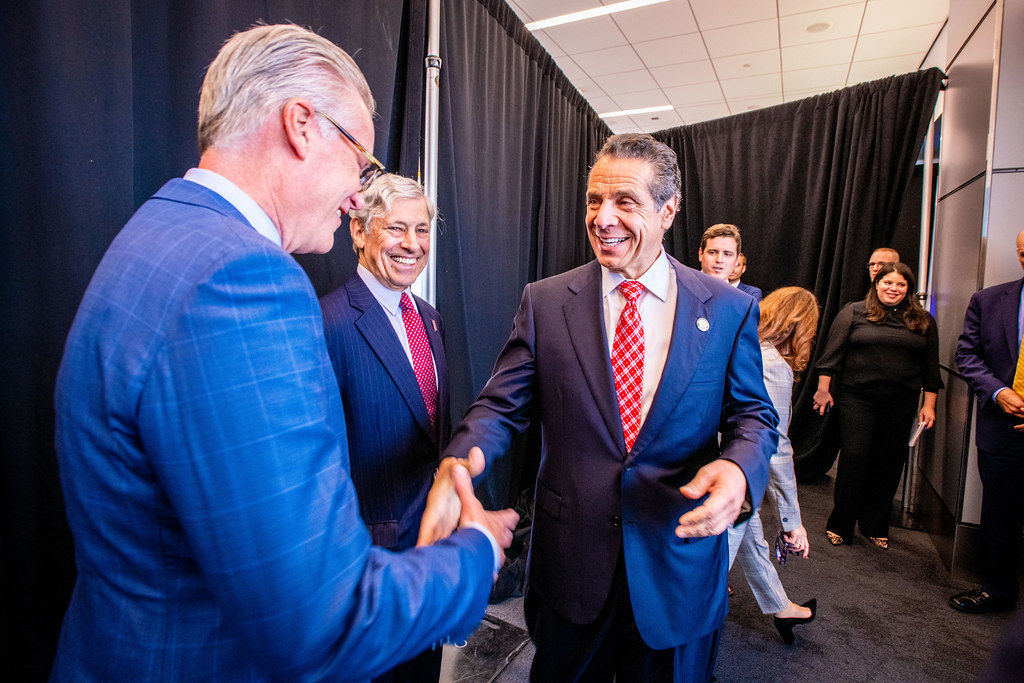
On August 15, 2018, during an anti-sex trafficking bill-signing event, Cuomo made a provocative statement: “We’re not gonna make America great again. It was never that great. We have not reached greatness. We will reach greatness when every American is fully engaged.” This remark, which was met with boos from his assembled supporters, reflected a willingness to challenge prevailing political narratives. His approval ratings fluctuated, reaching a low of 43% in February 2019 following the signing of progressive legislation such as an expansion of abortion rights and stricter gun laws, though polls indicated a majority of voters agreed with his stance on these issues. By early 2020, his favorability surged to a record high of 77%.
A notable controversy during his term involved appointee donations. On his first day in office, Cuomo renewed an executive order, originally signed by Eliot Spitzer, prohibiting governors from receiving donations from gubernatorial appointees. However, a February 2018 investigation by The New York Times revealed that his administration had quietly reinterpreted this order. Consequently, Cuomo had collected $890,000 from 24 of his appointees and an additional $1.3 million from their spouses, children, and businesses, with some donations made mere days after an appointment.
In March 2018, The New York Times reported that Cuomo had revised the disclaimer language on his campaign website regarding the executive order. The updated disclaimer introduced two caveats that allowed some gubernatorial appointees to donate, potentially enabling more contributions from this group. While a $2,500 donation from one appointee was returned due to violation of the new disclaimer, approximately $890,000 from other appointees was retained. For a period, from January 4, 2021, until his resignation on August 23, 2021, Cuomo held the distinction of being the longest-serving sitting governor in the United States, with 3,887 days in office.
Cuomo’s approach to corporate incentives was proactive, advocating for tax breaks and other inducements to attract businesses to New York State. In 2018, he even jested about changing his name to “Amazon Cuomo” to entice Amazon to locate its “Amazon HQ2” in the state. His robust support for New York City’s bid for Amazon’s HQ2 generated criticism from those who argued that the potential costs to the state might outweigh the benefits. Amazon ultimately decided on two “major corporate outposts” in New York City and Arlington, Virginia, before withdrawing from the New York City plan due to local pressure.

His administration’s response to the COVID-19 pandemic gained significant national attention. On March 1, 2020, Cuomo announced New York State’s first positive case of novel coronavirus, and the following day, he deemed community transmission “inevitable.” He emphasized New York City’s plan to significantly increase diagnostic testing, aiming for “1,000 tests per day.” He also announced a partnership between the “world-renowned” Wadsworth Center and hospitals to expand statewide testing capacity to “1,000 tests per day.”
On March 3, 2020, Cuomo signed a $40 million emergency management authorization for coronavirus response, maintaining that “New York’s overall risk remained low” while instituting new cleaning protocols for schools and public transportation. By March 4, with nine new cases confirmed, he articulated the challenge by stating it was “literally like trying to stop air” and that continued spread was unavoidable. Early in the pandemic, Cuomo received widespread praise from epidemiologists for his handling of the crisis, including implementing a statewide lockdown and shutting down nonessential businesses to “flatten the curve.” However, he also faced criticism for purportedly failing to grasp the severity of the pandemic before its full risks were evident to the American public.
In March 2020, Cuomo threatened Rhode Island with a lawsuit over its state quarantine policy that mandated quarantine for arriving New Yorkers. During the spring of 2020, his prominent role in pandemic response, often alongside his brother Chris Cuomo, led social media users and television hosts to coin the term “Cuomosexuals” to convey admiration for their leadership. By June 2021, Cuomo lifted COVID-19 restrictions after 70% of adults in the state had received at least one vaccine dose.
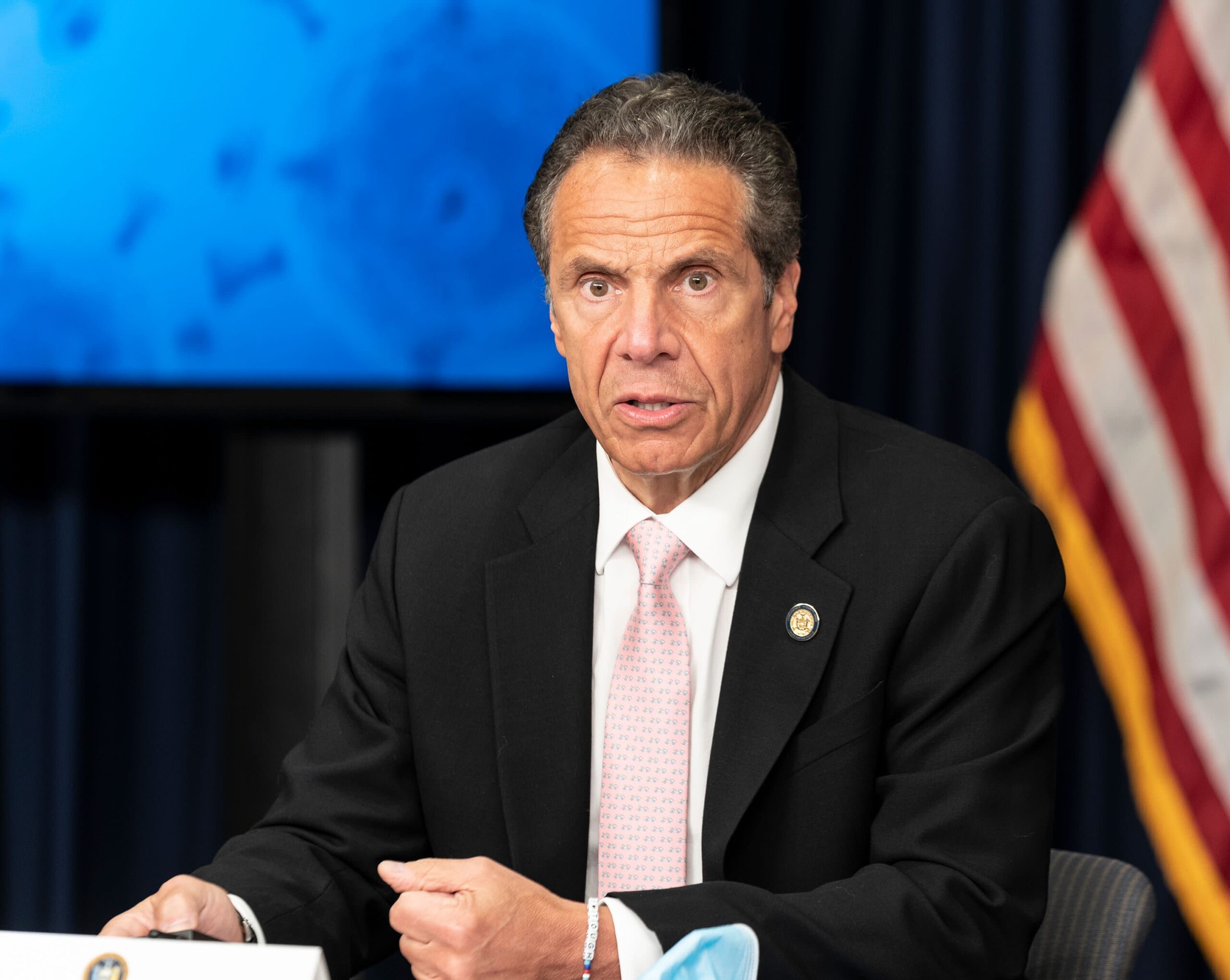
Amidst the pandemic, allegations emerged between July and August 2020 that Cuomo utilized state resources and government staff from the Executive Chamber to compile materials and perform frequent, non-voluntary work on the drafting of his book, “American Crisis.” Published in October 2020, the book proclaimed victory against the pandemic due to his leadership, despite New York having the highest per capita hospitalization rate in the country by February 2021. Cuomo reportedly received over $5 million for writing the book.
In November 2020, Cuomo was awarded the International Emmy Founders Award for his widely watched coronavirus briefings. However, on August 24, 2021, the morning after his resignation, the International Academy of Television Arts and Sciences rescinded the award in light of the New York Attorney General’s report on sexual harassment allegations. Furthermore, on December 14, 2021, the Joint Commission on Public Ethics (JCOPE) ordered Cuomo to pay New York State $5.1 million in book profits, reversing prior approval due to complaints of state resource misuse. While Cuomo denied these claims and sued JCOPE, an August 2022 appellate court decision upheld a lower court ruling that New York’s ethics watchdog commission was unconstitutional, allowing him to retain the book proceeds. Over the course of the pandemic, nine state health officials reportedly resigned in response to Cuomo’s policies, and on January 29, 2021, Cuomo publicly stated he did not trust the expertise of health officials.
In the realm of criminal justice, the Cuomo administration implemented several reforms. In August 2017, over $7 million in grants, funded by large bank settlements, were awarded to New York colleges to provide courses to prisoners. In January 2018, he proposed reforms aimed at “reduc[ing] delays during trials, ban[ning] asset seizures in cases where there has been no conviction and mak[ing] it easier for former convicts to get a job after leaving prison,” also advocating for an end to cash bail for minor crimes. However, his record on commutations was less extensive than many predecessors, with only nine sentences commuted. He did, however, issue pardons to 140 adults convicted of nonviolent felonies as minors and 18 others who had served their sentences but faced deportation risks due to their criminal records.
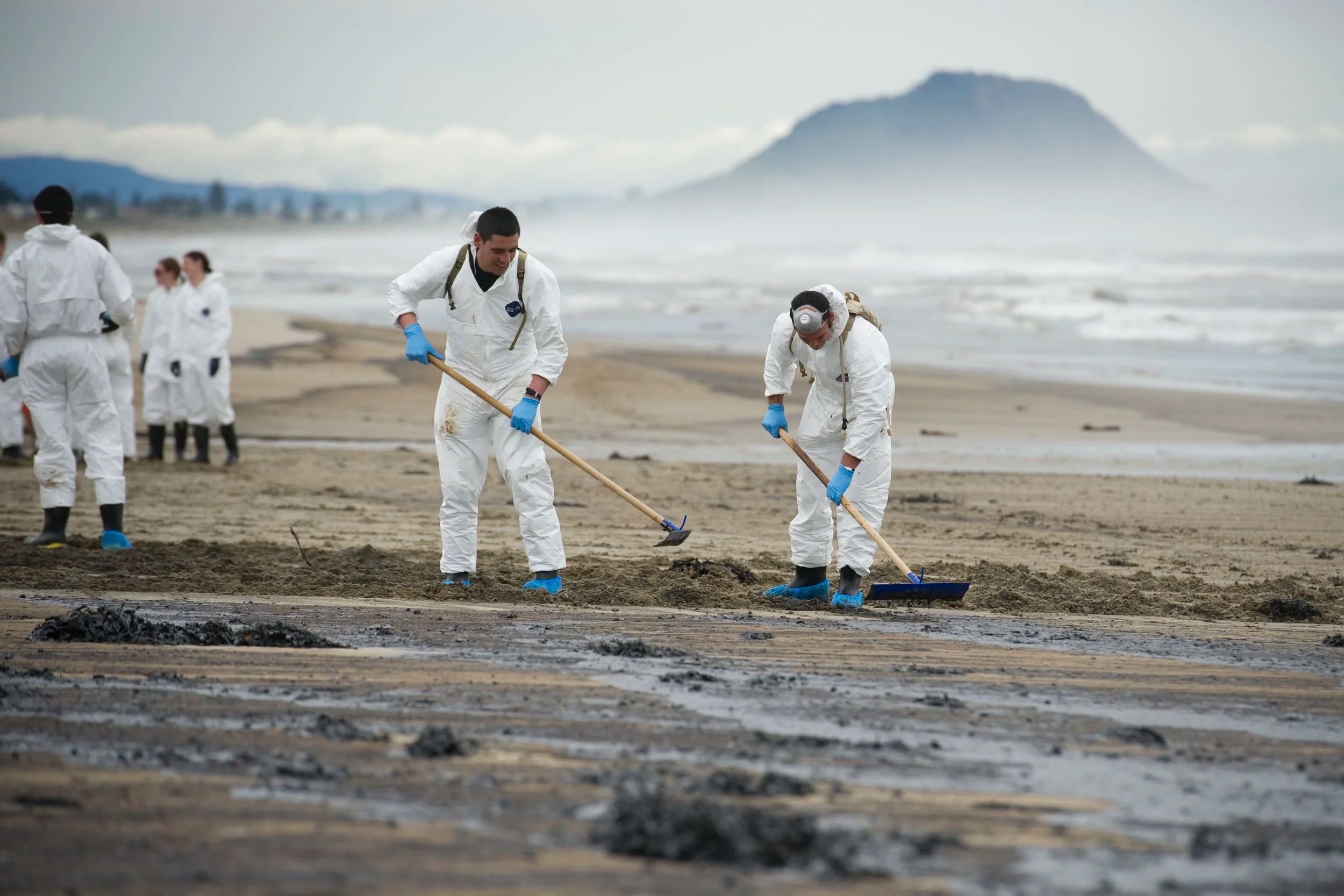
Cuomo’s administration also tackled significant energy and environmental issues. In 2017, he announced the closure of the Indian Point nuclear plant, which supplied a quarter of New York City’s power. Its decommissioning led to the replacement of carbon-free power with electricity generated by fossil fuels, consequently increasing greenhouse gas emissions and posing challenges for New York to meet its climate goals. Initially, in June 2012, the administration considered lifting a state ban on hydraulic fracturing, or “fracking,” to stimulate upstate New York’s economy. However, following a comprehensive study by health officials citing “significant public health risks” associated with the practice, Cuomo announced a permanent ban on hydraulic fracturing in New York State on December 17, 2014.
His stance on gun control was particularly prominent. On January 15, 2013, following the Sandy Hook Elementary School shooting, Cuomo signed the NY SAFE Act, described as the toughest gun control law in the United States. While praised by some, the act faced strong criticism, with the National Rifle Association calling it “draconian,” and the New York State Sheriffs’ Association criticizing its magazine limit and broad definition of assault weapons. An amendment signed on July 5, 2013, exempted retired police officers from some ownership restrictions. Further legislation included banning firearms for those convicted of domestic violence (April 2018), signing a “red flag” gun protection law (February 2019) allowing temporary prohibition of gun ownership for individuals deemed a threat, and laws banning the manufacture and sale of 3D-printed guns and mandating safe storage where children under 16 reside (July 2019). On July 7, 2021, Cuomo declared the first ‘disaster emergency’ in the United States on gun crime for New York.
Cuomo also engaged with the issue of “gravity knives,” resisting legislative efforts to decriminalize them through two vetoes. However, on May 30, 2019, he signed a repeal of the Penal Code provision, noting a shift in the “legal landscape.” He referenced the March 2019 ruling in Cracco v. Vance by the United States District Court for the Southern District of New York, which declared the existing “gravity knife” ban unconstitutional, citing its potential for “arbitrary and discriminatory enforcement.”
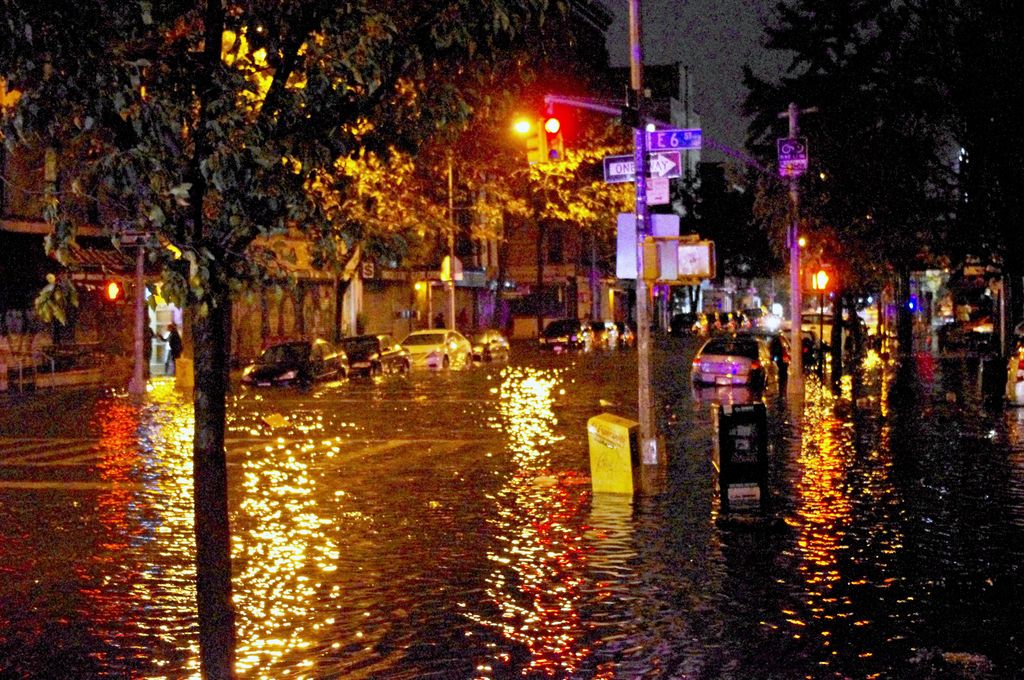
In the aftermath of Hurricane Sandy in October 2012, Cuomo implemented a specific provision allowing displaced New York voters to cast provisional ballots anywhere in the state for the 2012 election. He also established a commission to investigate the responses of New York utilities to the storm’s damage. A controversy arose when his administration used $140 million, including $40 million of federal disaster relief funds, to broadcast national TV advertisements promoting “New New York” slogans outside the state to attract new business investment. Critics, including former Governor Eliot Spitzer, denounced these ads as “fluff” and “a waste of taxpayer money.”
On the international stage, Cuomo demonstrated solidarity with Israel, announcing an executive order against the Boycott, Divestment and Sanctions (BDS) movement. He famously tweeted: “If you boycott Israel, New York State will boycott you.” Domestically, his administration progressively moved towards cannabis reform. In January 2014, he issued an executive order permitting the limited use of medical marijuana in New York. Later that year, a comprehensive bill legalizing medical cannabis was passed by the state legislature, albeit with certain restrictions insisted upon by Cuomo, such as a ban on consumption by smoking.
Cuomo’s second term was cut short by a series of escalating controversies, primarily allegations of sexual misconduct. Beginning in late 2020, numerous accusations of sexual harassment emerged. An independent investigation commissioned by New York Attorney General Letitia James concluded in August 2021 that Cuomo had sexually harassed at least 11 women between 2013 and 2020 and had retaliated against those who complained about his behavior.
The release of James’s report prompted widespread calls for Cuomo’s resignation, including from President Joe Biden. Faced with an impeachment investigation, Cuomo announced his resignation on August 10, 2021, which became effective on August 23, 2021, and he was succeeded by his lieutenant governor, Kathy Hochul. Following his departure, criminal investigations by the district attorney offices for Manhattan, Nassau County, Westchester County, and Oswego County were closed without charges filed. A criminal charge in Albany County was subsequently dropped in 2022.

In March 2025, Andrew Cuomo embarked on a political comeback bid, announcing his intention to run for mayor of New York City in the 2025 election. Despite leading in most Democratic primary polls, he experienced a significant upset, losing to Zohran Mamdani. Conceding defeat in the primary, Cuomo nonetheless launched an independent bid for the mayoral office in July. His political trajectory, from his Queens beginnings, through years of commanding leadership in New York State, and into a post-gubernatorial period defined by legal battles and a determined return to public life, underscores a career of persistent ambition, profound policy influence, and an enduring capacity to both inspire and divide.
Cuomo’s journey has been a testament to the complexities of modern political leadership. From the initial promises of his early career to the legislative victories and the shadows cast by various controversies, his tenure as governor of New York marked a pivotal era for the state. His story, interwoven with the fabric of New York politics, offers a compelling study of power, public service, and the relentless pursuit of impact.



